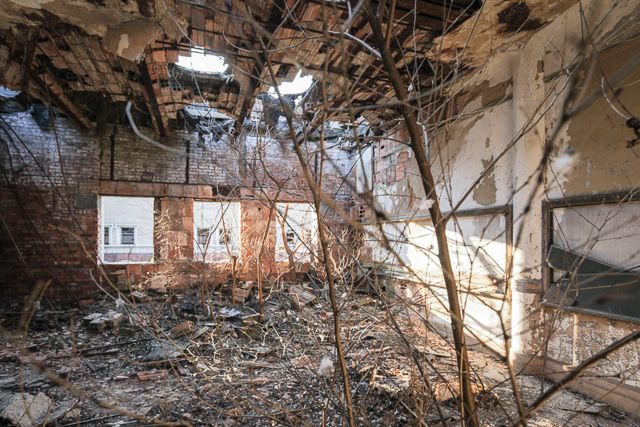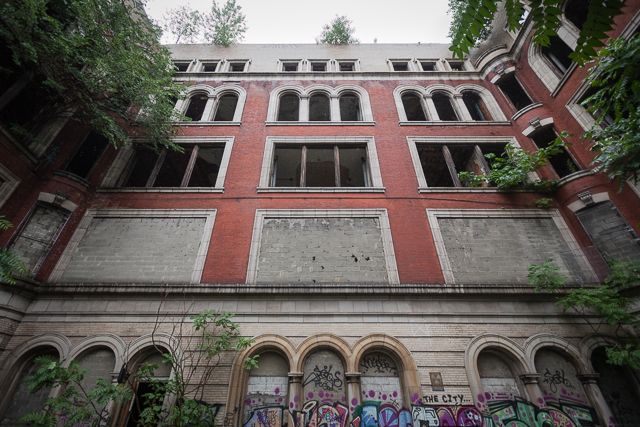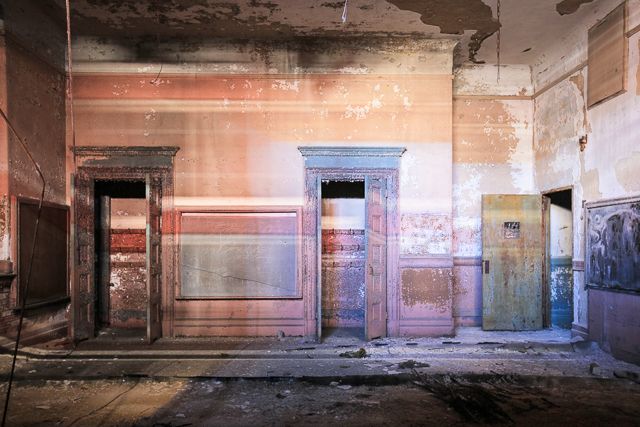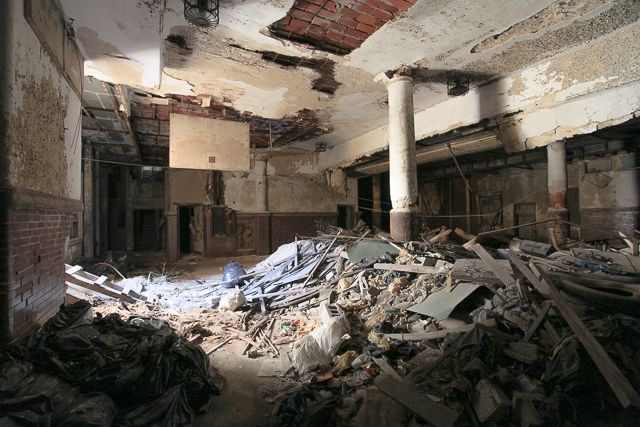Last Chance to Catch NYC's Holiday Notalgia Train
We met the voices of the NYC subway on our nostalgia ride this weekend!



All photographs by Will Ellis of Abandoned NYC,
Editor Note: With the news that Harlem’s long abandoned PS is finally going to be converted into a Boys and Girls Club and apartment rentals, we turned to our resident Abandoned NYC columnist here at Untapped Cities to share with us images of his exploration into the space.
School’s out forever; at least at P.S. 186. This aging beauty has loomed over West Harlem’s 145th Street for 111 years—but it’s been vacant exactly a third of that time. The Italian Renaissance structure was considered dilapidated when it shuttered 39 years ago, and today its interiors feel more sepulchral than scholastic.
Windows gape on four of its five stories, exposing classrooms to a barrage of elements. Spongy wood flooring, wafer-thin in spots, supports a profusion of weeds. Adolescent saplings reach upward through skylights and arch through windows. Infused with an odor not unlike an antiquarian book collection, upper floors harbor a population of hundreds of mummified pigeon carcasses—the overall effect is grim. You’d never guess this building had an owner, but sure enough…

The site was purchased in 1986 by the nonprofit Boys and Girls Club of Harlem for $215,000 under the condition that new development would be completed within three years. After several decades of inactivity, the group introduced a redevelopment plan that called for the demolition of P.S. 186 and the construction of a 200,000 sq. ft. mixed-use facility with affordable housing, commercial and community space, and a new public school.


News of the school’s demolition mobilized area residents to save the structure. A series of local petitions and letter-writing campaigns championed the preservation of P.S. 186, and gained the support of the New York Landmarks Conservancy, though a landmark bid was blocked at a 2010 community board meeting. At the time, owners insisted that rehabilitating the decrepit building was a financial impossibility.

In a surprising turn of events, the BGCH downsized the plan in favor of preservation. The school will be renovated into 78 units of housing (63 for low-income) and a 10,000 square foot Boys and Girls Club. It’s a rare victory for preservationists, and an unlikely one given the school’s history—when the building was last in use, community members wanted nothing more than to see the place razed.


In addition to generally run-down conditions, safety became a major concern at P.S. 186 in its final years. The H-shaped design allegedly had the potential to trap “hundreds of children and teachers” in the event of a fire. Doors on the bottom floor were to remain open at all times to keep the outdated floor plan up to code, leaving the building completely vulnerable to neighborhood crime.


According to the school’s principal at the time, “parents have been robbed in here at knife point, and people…use this building as a through-way.” In a 1972 incident, two youths, including the 17-year-old brother of a 5-year-old P.S. 186 student, broke into room 407 and raped a teacher’s aide at gunpoint.
Increasing community concern reached a boiling point earlier that year when 60 members of the African American empowerment group NEGRO (National Economic Growth and Reconstruction Organization) moved into the school to call for an evacuation of 600 students on the top three floors.

The stunt caught the attention of the Fire Department, who toured the school later that week. A deputy chief “didn’t see any real hazardous problem,” but was forced to evacuate the remaining 900 students when he was unable to activate the fire alarm. Inspectors discovered that wires leading out of the alarm system had been cut, although a school custodian claimed that the alarm system had worked during a routine test at 7:30 that morning.
By 1975, funding was at last approved for a replacement school, and much to the relief of parents, plans were put in place for the immediate demolition of the aging fire trap. Who could predict that thirty-seven years later P.S. 186 would be getting a second chance?

A few decades ago, this school was described as “antiquated,” “unsafe,” and “plain,” but today, it’s called “historic,” “magnificent,” and “beautifully designed.” This reversal illustrates the complex relationship we New Yorkers have with our buildings, and begs the question: what might the the thousands of old structures we see torn down every year have meant to us in a century?


To keep vagrants out, cinderblocks had been installed in almost every window and door of the bottom floor. It was too dark to shoot—but still, light was finding its way in. Through every masonry crack and plaster aperture, bands of color projected onto decaying classrooms, vibrant variations on a pinhole camera effect. Past a vault inexplicably filled with tree limbs, a hall of camera obscuras each hosting an optical phenomenon more bewitching than the last. P.S. 186 is largely considered an eyesore in its current state, but who could deny that its interior is a thing of beauty?
Here’s a look inside, before we turn the page on what’s destined to be the most colorful chapter in the controversial, and continuing, history of this unofficial Harlem landmark.
All photographs by Will Ellis of Abandoned NYC, see more of his abandoned column on Untapped Cities.
Subscribe to our newsletter